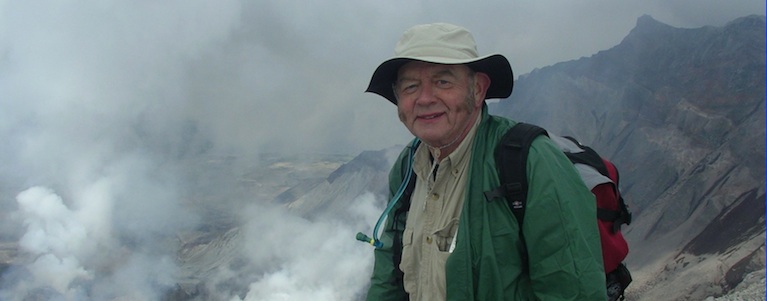
Cases of reinfection
with COVID-19
have been reported
but remain rare.
So far, only a few dozen people worldwide have been confirmed to have been infected twice with SARS-CoV-2, the virus that causes COVID-19.
“Our current understanding of the immune response is that the majority of people who are infected mount an immune response within a few weeks of infection,” a WHO spokesman said via email. “We are still learning about how long the antibodies last. So far, we have data that shows that the immune response lasts for several months.”
The research, which involved more than 12,000 front-line health care workers in Britain, found that just three of the 1,246 participants who had already developed COVID-19 antibodies retested positive for the virus — and they were all asymptomatic.
Info: shpr.fyi/reinfect

Team finds oldest, most distant galaxy GN-z11
Keck Observatory, Waimea, Hawaii, keckobservatory.org
A team of astronomers used the Keck I telescope to measure the distance to an ancient galaxy. They deduced the target galaxy GN-z11 is not only the oldest galaxy but also the most distant. It’s so distant it defines the very boundary of the observable universe itself. The team hopes this study can shed light on a period of cosmological history when the universe was only a few hundred million years old.
Kashikawa and his team measured what’s known as the redshift of GN-z11; this refers to the way light stretches out, becomes redder, the farther it travels. Certain chemical signatures, called emission lines, imprint distinct patterns in the light from distant objects. By measuring how stretched these telltale signatures are, astronomers can deduce how far the light must have traveled, thus giving away the distance from the target galaxy.
“We looked at ultraviolet light specifically, as that is the area of the electromagnetic spectrum we expected to find the redshifted chemical signatures,” said Kashikawa. “The Hubble Space Telescope detected the signature multiple times in the spectrum of GN-z11. However, even the Hubble cannot resolve ultraviolet emission lines to the degree we needed. So we turned to a more up-to-date ground-based spectrograph, an instrument to measure emission lines, called MOSFIRE, which is mounted to the Keck I telescope in Hawaii.”
The MOSFIRE captured the emission lines from GN-z11 in detail, which allowed the team to make a much better estimation on its distance than was possible from previous data. When working with distances at these scales, it is not sensible to use our familiar units of kilometers or even multiples of them; instead, astronomers use a value known as the redshift number denoted by z. Kashikawa and his team improved the accuracy of the galaxy’s z value by a factor of 100. If subsequent observations can confirm this, then the astronomers can confidently say GN-z11 is the farthest galaxy ever detected in the universe.
Info: shpr.fyi/farthest
Hot times comin’
In the next five years, the world has nearly a 1-in-4 chance of experiencing a year that’s hot enough to put the global temperature at 2.7 degrees (1.5 degrees Celsius) above pre-industrial times, according to a new science 130 degrees (54.4 degrees Celsius) and Siberia hit 100 degrees (38 degrees Celsius). The warming that has already occurred has “increased the odds of extreme events that are unprecedented in our historical experience,” Stanford University climate scientist Noah Diffenbaugh said. For example, historical global warming has increased the odds of record-setting hot extremes at more than 80% of the globe, and has “doubled or even tripled the odds over the region of California and the western U.S. that has experienced record-setting heat in recent weeks,” Diffenbaugh added.
Info: shpr.fyi/hottimes
Dave Bunting
